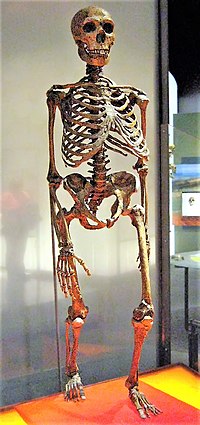
Photo from wikipedia
Abstract This study focuses on the analysis of a group of decapitated crania, which date to the Epiclassic period (ca. 600–900 CE). The crania were excavated from a small ritual… Click to show full abstract
Abstract This study focuses on the analysis of a group of decapitated crania, which date to the Epiclassic period (ca. 600–900 CE). The crania were excavated from a small ritual site in the former lake bed of Lake Xaltocan, in the Basin of Mexico. Using non-metric cranial attributes, we undertook an intergroup analysis using an MMD biodistance. To place the Lake Xaltocan remains in a regional and historical biological context, we examined and recorded 13 non-metric, cranial features in 276 skulls from sites throughout central Mexico, including Tlatilco (N1 = 78), Teotihuacan (N2 = 66), Valle de Toluca (N3 = 33), and Xaltocan (N4 = 118). The results indicate that the most closely associated groups are Xaltocan and Valle de Toluca. Nevertheless, biodistance data indicate that all the groups significantly differ from one another, with a level of confidence of α = 6.6 × 10−6. This finding points to the existence of biological discontinuity among all the samples. Our results fall in line with existing proposals asserting that, after the fall of Teotihuacan, an intense population mobility occurred in central Mexico.
Journal Title: Journal of Archaeological Science: Reports
Year Published: 2019
Link to full text (if available)
Share on Social Media: Sign Up to like & get
recommendations!